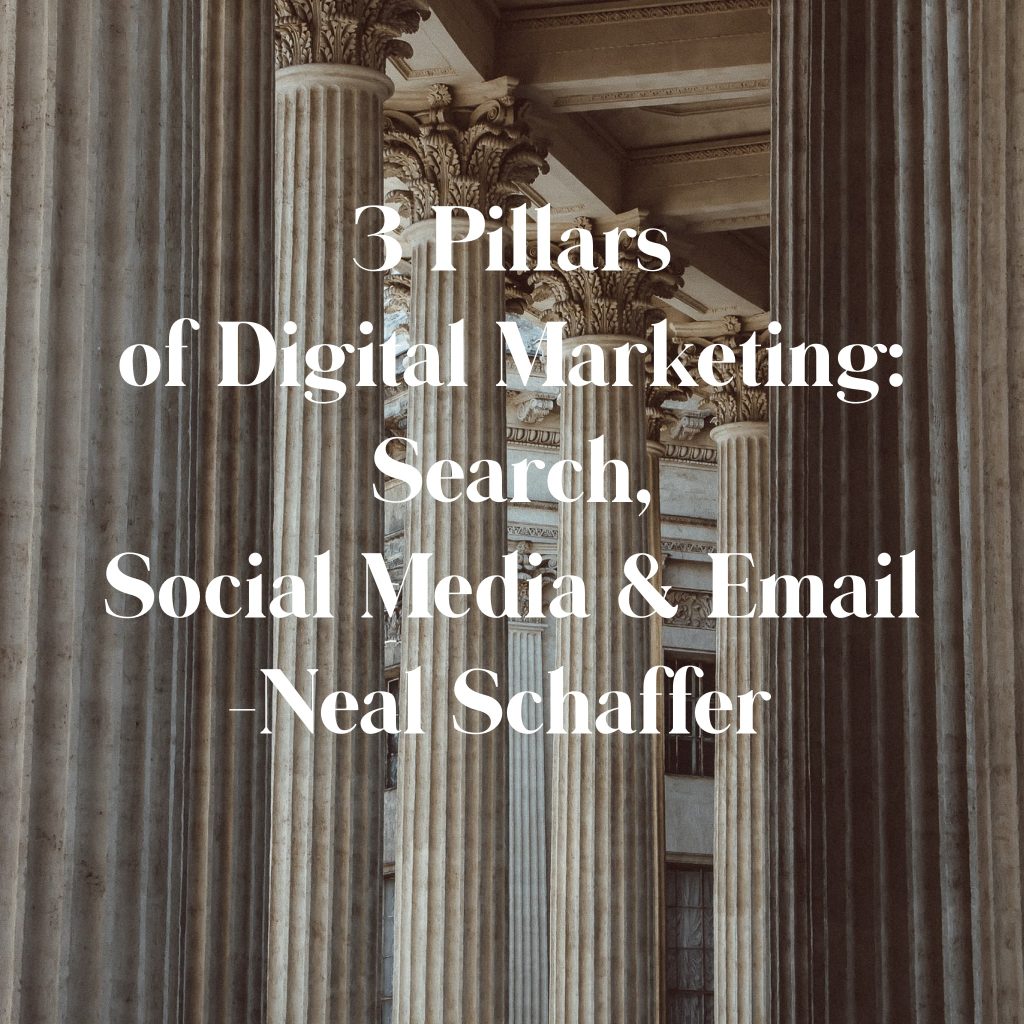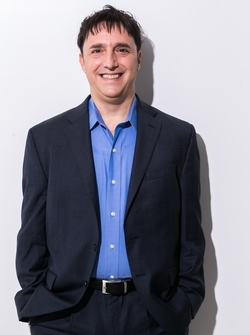Why do international companies consider influencer marketing the most important tactic in their marketing toolbox? What are the keys to building long-term successful relationships with your customers? In this episode, Chris and Ryan are joined by Neal Schaffer to discuss the Age of Influence and the three critical pillars to a successful digital marketing campaign.
Here are some of the podcast episode highlights:
Chris Casale: [00:03:41] Why influencers? Why should I allocate a part of my budget to the social media influencers space?
Neal Schaffer: [00:03:46] OK. Where do I start? I think that influencer marketing has been this buzz word that has completely misled businesses into absolute misinterpretation of what digital influence means today. So normally, you know, you’re a business owner, you’re rolling your eyes. Why am I going to pay Kim Kardashian type, you know, a million dollars who has a lot of followers?
And I’m going to get a lot of likes and it’s probably not going have any business impact. And who are these influencers? And, you know, and that is the wrong way to think about it. And if you keep thinking about it that way, you miss out on the potential, really big potential that influence marketing has. So when I wrote this book, The Age of Influence, which came out this year, you know, March of 2020, the book was in preparation for a few years and all of my content and really everybody listening your content on your website, you know, your blog, your social media, it should all be about helping people with the problems or helping businesses with the problems they have. And I was no different. So I would be getting asked a lot of questions, not just about influencer marketing, but also about how do I become an influencer.
Neal Schaffer: [00:05:25] So influencer marketing is about tapping into influencers, but it’s not limited to Instagram.
Neal Schaffer: [00:06:53] So the idea about influencer marketing is you’re collaborating with someone that has a digital footprint and you’re trying to tap into their community in hopes that they spread the word about you or your business.
How is influencer marketing and word-of-mouth marketing similar?
Neal Schaffer: [00:08:48] I do work in Japan and I’ll never forget speaking to a number of small business owners about influence marketing there now. Japan is a country that is really, really late in terms of social media marketing and digital marketing, believe it or not, especially in B2B spaces. But this was primarily B2C, right? B2C, small business owners, entrepreneurs. And when I was done with the conversation, they go, you know what, Neil? We don’t get the whole organic social media piece, but we get influencer marketing because we built our businesses off of word of mouth marketing and influencer marketing at its heart is tapping into that. It’s inciting word-of-mouth marketing in social media.
What is the difference between Micro Influencers and Nano Influencers?
Neal Schaffer: [00:10:35] To sort of reframe the conversation about influencers, even in this influencer marketing industry, which defines influence by number of followers, which is not accurate by any means and is very focused on Instagram. You know, a few years they started talking about micro influencers, people that had 10,000 followers. Now they talk about nano influencers. People that have 1,000 followers.
So now you look around you, you look at your employees, you look at your customers. You look at your partners. You look at your social media followers. There’s a lot of people out there that have a thousand followers that you can tap into. And when you tap into people that already like, know and trust your brand, which is what I’m a proponent of.
It doesn’t necessarily cost money. Right. You can get it. You can do a lot with free product, with giving unique experiences with, you know, collaborating in unique ways. And I’d also say that, you know, tapping into influencers for content amplification may not be as valuable as tapping into influencers for content creation. So you don’t have to make any more content. You can purely leverage all the people around you that already know and trust your brand.
Neal Schaffer: [00:11:40] If you don’t have a lot of employees, if you don’t have a lot of customers, and if no one is talking about you on social media and advertising and kind of make people talk about you, you have to build an army of of of influences of other social media users. They don’t have to be celebrity influencers. They can be narrow influencers. And what you often do this by is by seeing the market with content. I seeded the market. I wanted people to talk about my new book. I went to Social Media Marketing World. What…I brought like 50 copies with me. Right. And I look around the room and I see Melanie Deziel. She’s another author of the Content Fuel Framework, used to work at Time magazine. She’s doing the same thing, right? It’s the same concept.
Neal Schaffer: [00:14:13] When I was in Singapore and I was speaking to a brand manager for a new brand at one of the largest consumer packaged goods conglomerates in the world. European company. And he was basically saying, if we don’t use influence or marketing, how are we going to get the word out about our product?
And that’s how far influence in marketing has become in Southeast Asia and China, specifically that, you know, we have Estee Lauder who announced 75% of their marketing budgets going in influencers and maybe for something that’s, you know, B2C fashion related, very visual, that makes a lot of sense.
But really, that’s how far we’ve come in some parts of the world in terms of the importance of working with influencers once you redefine it. And they work with a lot of nano influences while they work with people. And, you know, we see brands starting to do this. They want to work with people that actually use their product because how the heck are you going to talk about your product? You know, authentic and relatable way. If you’re not an actual user of it.

Neal Schaffer: [00:18:48] Studies are showing that more and more brands want to work more with the nano and micro influencer who are not only less expensive, but also the communities find them more relatable, especially in a time of today where you see something on Instagram, it just looks so fake, right? People, they want to see celebrities in their pajamas, livestream from their home. They want to see the reality because we’re all in the same boat and anything that doesn’t have that reality. It just it looks out of place. And I think a lot of those influencers have had to sort of adjust for the reality of today.
Ryan Smith: [00:19:20] So going into what you’re talking about, the micro, the Nano, how does somebody even get started? How does someone build an influence or build an audience and then create that influence?
Neal Schaffer: [00:19:32] Well, what we find is that, you know, every celebrity started out as a smaller influencer. They started out with a zero following and built that from there. So, you know, first of all, if you are an influencer, you are a content creator because you are publishing content on a regular basis on a given social network or your podcast or you’re blogger.
But it’s the same thing. You’re a content creator in one way or another. Also, you know, maybe when we have newer networks, you’ve built that influence on another network and you can bring it over.
Which is why when I see people on Instagram where they don’t have a link and they have tons of followers and I’ve never heard of them, I always sort a question where they got that influence from. But if you go really deep into any given network and you consistently create content, you consistently engage with others, you know, not only reactively when they engage with you, but proactively you make use of all the features that the platform has. I’m thinking about Instagram, of making use of stories on a regular basis, making use of IGTV, making use of all the different functionality that stories has and really, you know, resonating with other people.
There are other tactics that, you know, influencers may have use. They may have done giveaways to build a following and what have you. But I think over time when people do searches, they find your content right or they get recommendations from other people. You should follow this person or they find you on the discovery tab, you know, whatever it is.
Over time, you slowly build this community. And I think that’s really universal for any given platform, whether you’re a podcast, a podcaster or you’re you’re promoting your podcast and, you know, making it visible on other social media or on Google or you’re a blogger and you’re working on SEO, you’re trying to do a guest blog post to tap into other communities. And influencers, also collaborate with each other as well to sort of cross pollinate their following. So it’s a combination of things.
But the heart of it is a content creator on a given social network:
- consistently publishing,
- consistently engaging, including proactively engaging in
- The last thing is it’s over time…It doesn’t happen overnight.
Chris Casale: [00:21:54] Are there certain social platforms that you think lend better to having a sphere of influence?
Neal Schaffer: [00:22:35] So where are your target customers? Is obviously number one. You know what? What networks do they lurk on is number two?
What’s the key to success in becoming influential?
Neal Schaffer: [00:29:45] I think that podcasting as a medium is still growing. Facebook as a medium is not growing. Right. It’s plateaued. Not to say that there isn’t potential there. But podcasting as a medium is still growing. And I think YouTube as a medium, believe it or not, is still growing because the younger demographics use it even more than older demographics. So these are just things to consider. But you got to stay on it. You’ve got to commit at least a year and you really need to stockpile content and ideas. And if you’re passionate about it, you’ll come up with ideas. You’ll be inspired by things around you on a daily basis. And I think that’s really the key to success in and becoming influential in any given content medium or platform or social network.

What are the 3 pillars of digital marketing?
Neal Schaffer: [00:33:28] Today you need to do search. You need to do social. You need to do email. These are the three pillars of digital marketing. And every one of them requires content. Right?
You can’t do any of those without content. So if you’re going to have content, what is that content look like? And if you’re just doing content based around products and services, you missed out. Miss out on all the Google searches and all the conversations and social related to things related to those products or services or that the problems that they solve.
So when do you start getting into that? You get into the sort of the storytelling, you get into tapping into the voices of your customers, what have you. And that becomes blog content. That becomes social media content. Right. So it really is a natural extension. If you want to be successful in business today, you really need to figure that out and get the courage.
Ryan Smith: [00:36:15] There’s a lot of ways that you can produce content, the written word, video, audio. Is there a certain order of importance where you create that content? It is a YouTube video more influential or important than, let’s say, a blog post or an Instagram post.
Neal Schaffer: [00:36:34] That’s a really great question. You know, I don’t think that there’s any order. I think it comes down to what does what’s the type of content that your target audience likes to consume and what do you think you’ll be able to consistently create great content doing.
Neal Schaffer: [00:37:13] If you were to publish a podcasts, you would probably get more listens to every weekly episode than hits on a blog post
Chris Casale: [00:39:32] If there was one takeaway that you would want listeners to have that have listened throughout this episode. What would it be?
Neal Schaffer: [00:39:40] So I talked about those three pillars of digital. Right. So you need to be in front of search engines. You need to be in front of your customers in their inbox. And you need to engage them on social media. You know, I think that when we look at digital, we think, OK, well, we need a website, we need SEO or Pay Per Click.
We need to do e-mail marketing or marketing automation. We need the content, the content marketing, the blogging, the lead magnets. What have you? And we need to be doing social media, organic and paid.
It’s that next that sixth…I talked about the three pillars actually used to talk about having these five pillars. But it’s that sixth pillar that people forget about, and that’s the role of collaborating with other social media users, which is that influencer marketing piece, because organic social media for most companies is dead.
Rate, Review and Subscribe to the Digital Marketing Happy Hour Podcast
If you feel like you learned something of value or maybe laughed a little, would you please consider leaving a rating and review?
Finally, if you haven’t done so already, please subscribe to the podcast, so that you don’t miss another episode. It’s a seamless way to stay informed and up-to-date on digital marketing.



